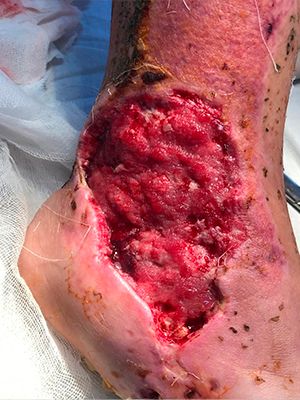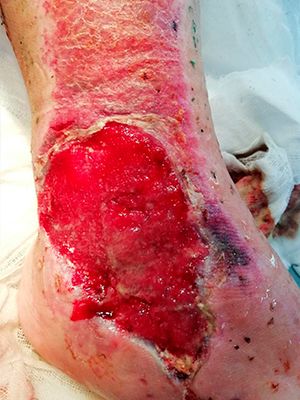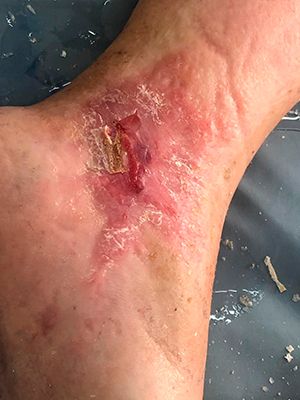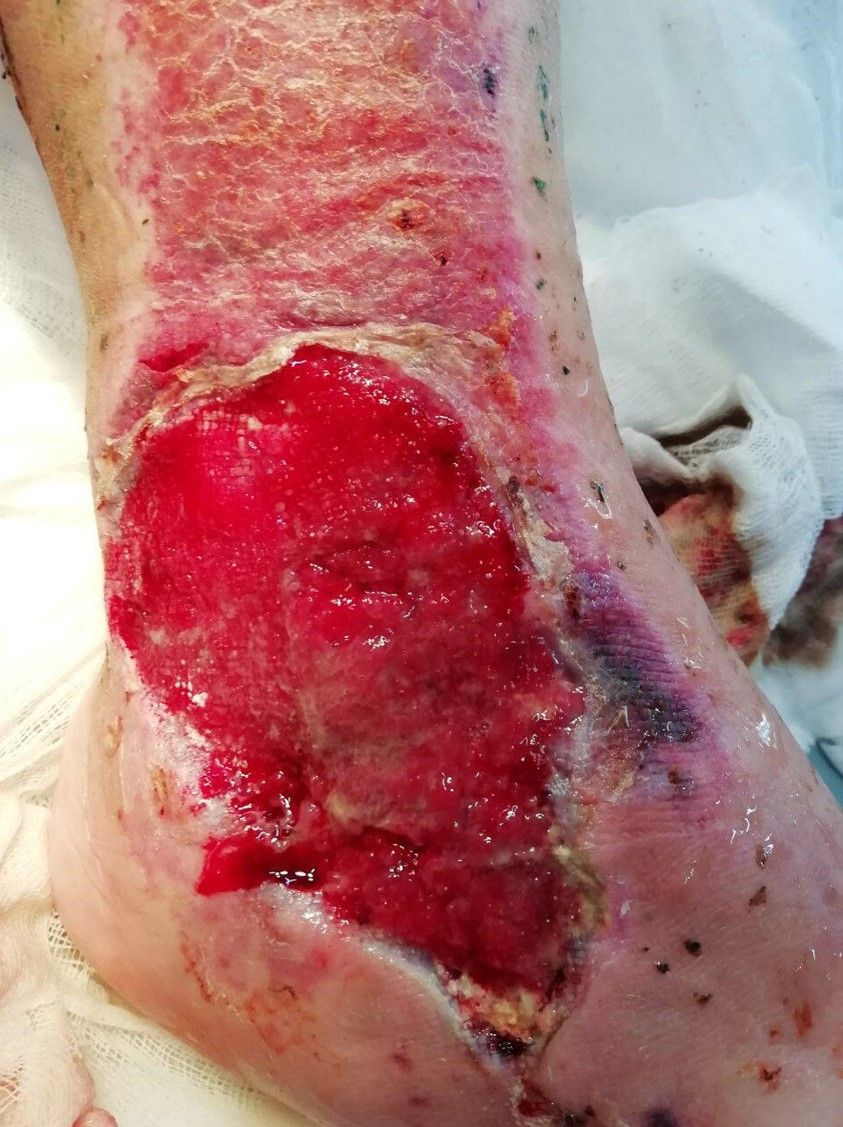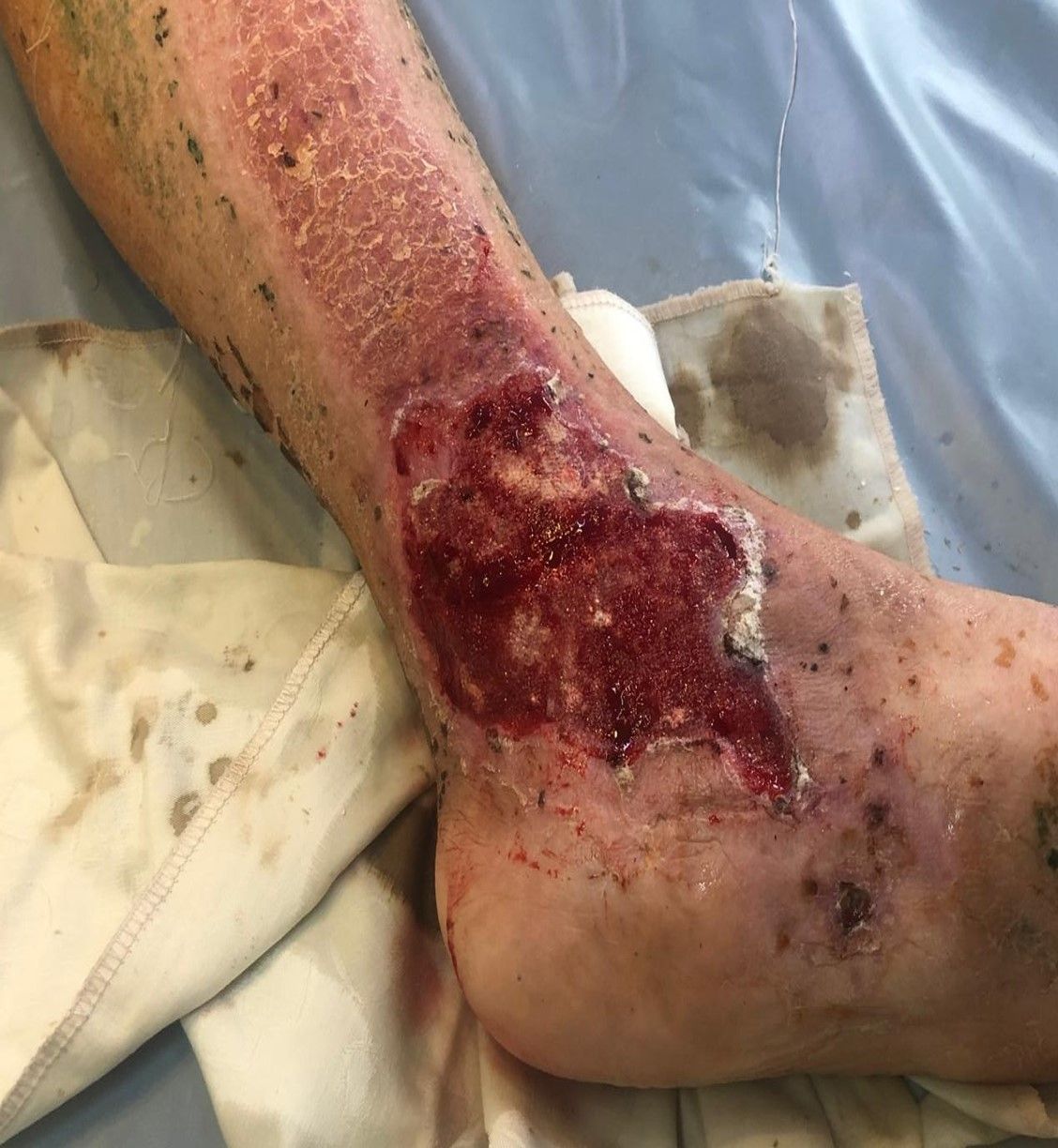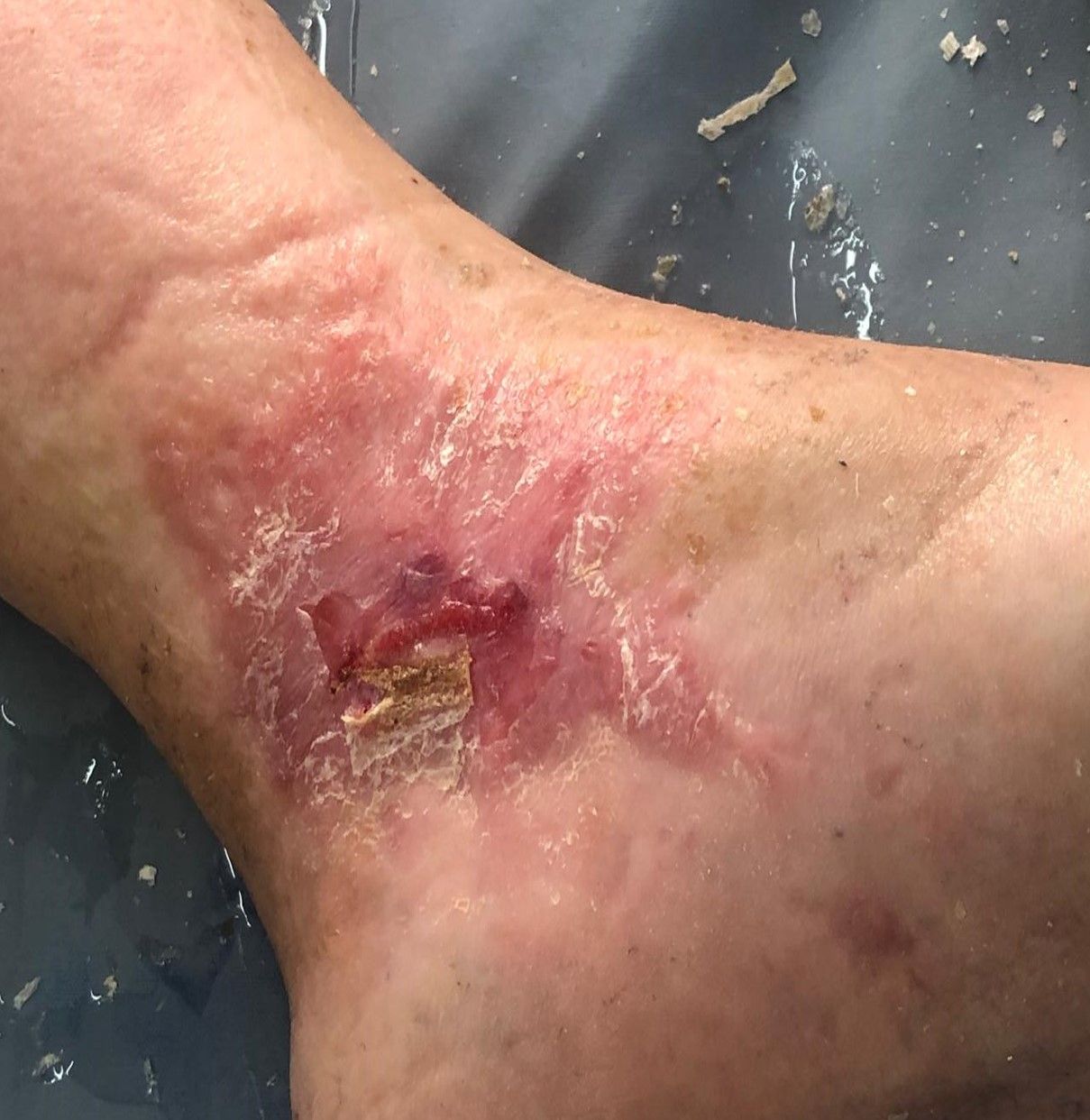- Usage
- Usage Cases
- Extensive ankle wound.Laceration of the ankle due to an accident
Case №41
Extensive ankle wound. Laceration of the ankle due to an accident
Time period for the presence of a wound : 1,5 months
Application of Mirragen: 25.09.19
Odessa Regional Children's Clinical Hospital
-
Patient:
Boy
-
Age:
12 years
-
Diagnosis:
Extensive ankle wound. Laceration of the ankle due to an accident
Classification of injuries
Currently, injuries, especially when ice starts, are one of the main causes of disability, disability and mortality, and therefore have great socio-economic importance.
Injuries accompany a person all his life. Almost 30% of the total number of ambulance crew visits are related to accidents. The injury rate is 8,730.3 cases per 100 thousand of the adult population, that is, about 9 injuries occur annually per 100 people.
Classifications and types of injuries
The term trauma (from the Greek. Trauma - wound) denotes a violation of the integrity of tissues and organs as a result of exposure to environmental factors.
There are several classifications of injuries. One of them divides injuries by the time of their occurrence into acute and chronic.
- Acute trauma is a simultaneous effect of various external factors (mechanical, thermal, chemical, radiation, etc.) on the human body, leading to a violation of the structure, integrity of tissues and the functions they perform.
- Chronic trauma is damage resulting from repeated and constant non-intensive effects of the same traumatic factor.
By the type of damaging moment, all injuries can be divided into:
- Mechanical,
- Thermal (burns, frostbite),
- Chemical,
- Barotrauma (damage caused by a sharp change in the pressure of the external environment),
- electrical injuries,
- combined (combination of mechanical and non-mechanical damage, for example, fracture and burns, etc.).
The circumstances of injury are separately distinguished:
- Household,
- Production,
- Sports,
- Combat, etc.
The presence or absence of damage to the integrity of the skin divides injuries into open and closed.
Also, injuries can be divided according to the extent of the lesion:
- isolated (damage to one organ or within one segment of the musculoskeletal system);
- multiple (damage to several organs or several segments of the limbs, that is, there are simultaneous fractures of two or more segments or sections of the musculoskeletal system);
- combined (simultaneous damage to internal organs and the musculoskeletal system).
Any trauma is accompanied by bleeding or edema with the development of local inflammation and with possible subsequent tissue necrosis. Severe and multiple injuries are usually accompanied by traumatic shock and are very life-threatening.
Cooperate With Us
or via contact phones or email
-
Conveniently
By contacting only one supplier, our customers receive a wide range of products in the shortest possible time.
-
Simple
Our customers are only required to form an order for the supply of products, we will take care of all further tasks
-
Profitable
We save our customers money on import
and delivery taxes
